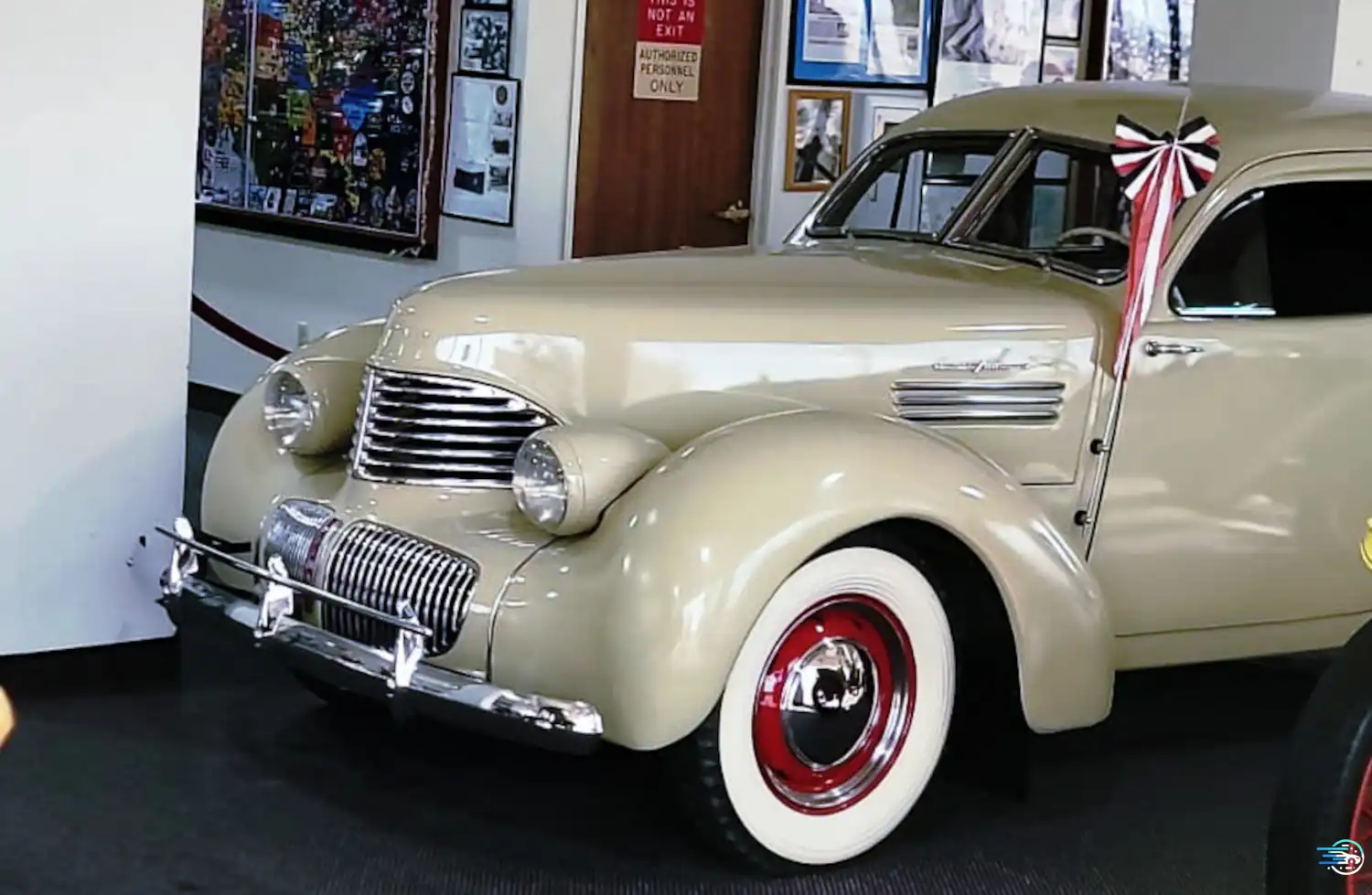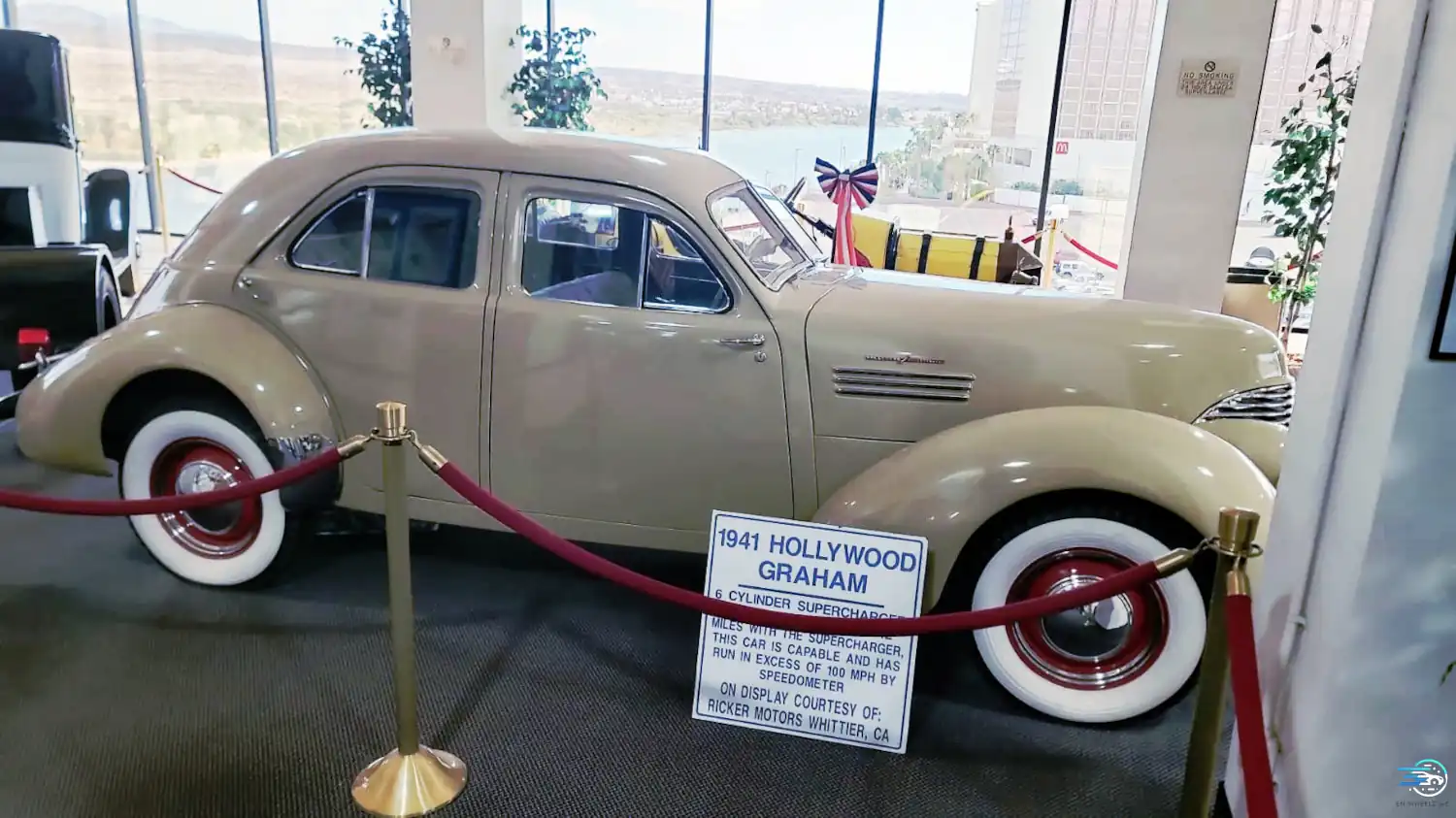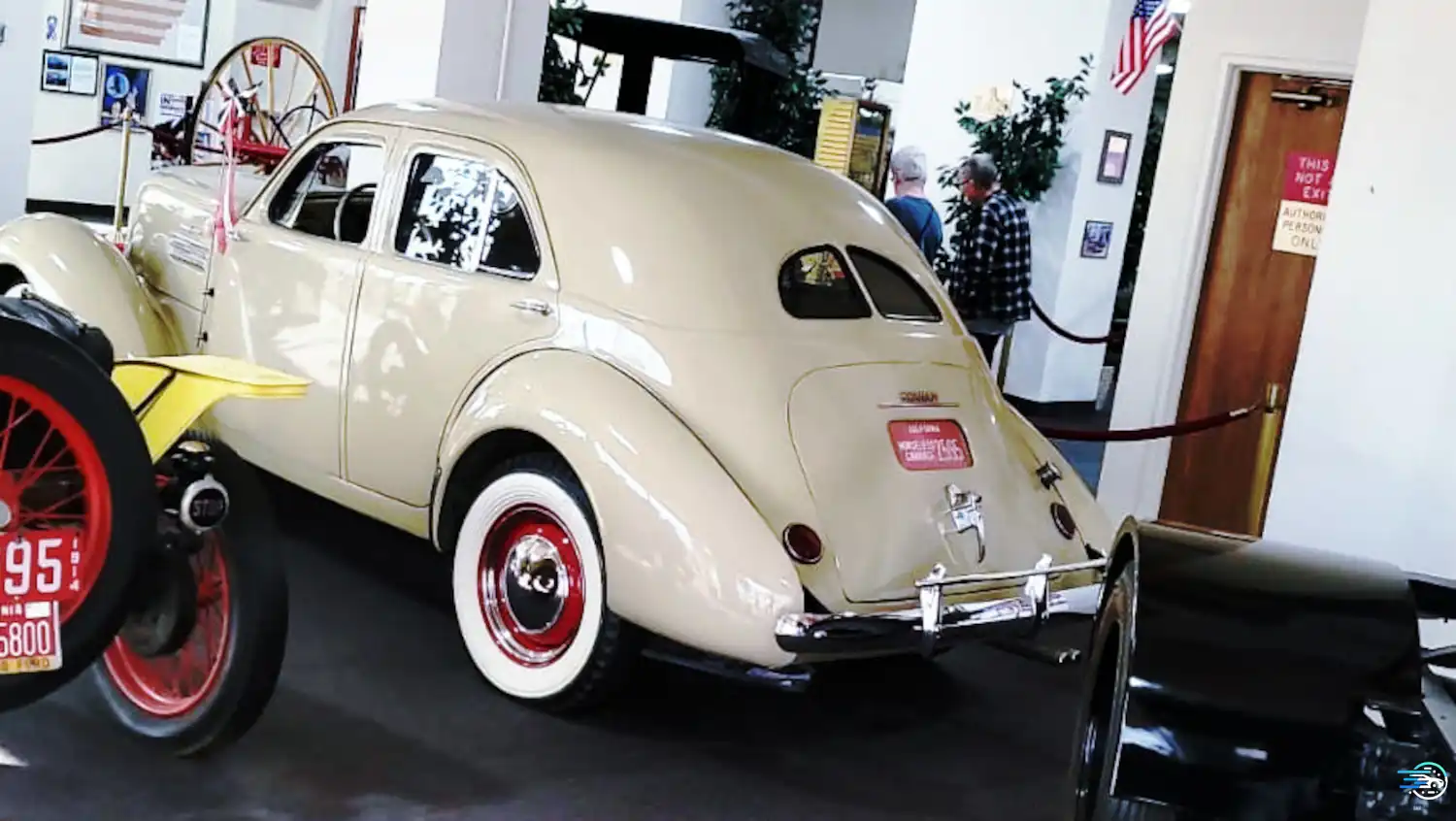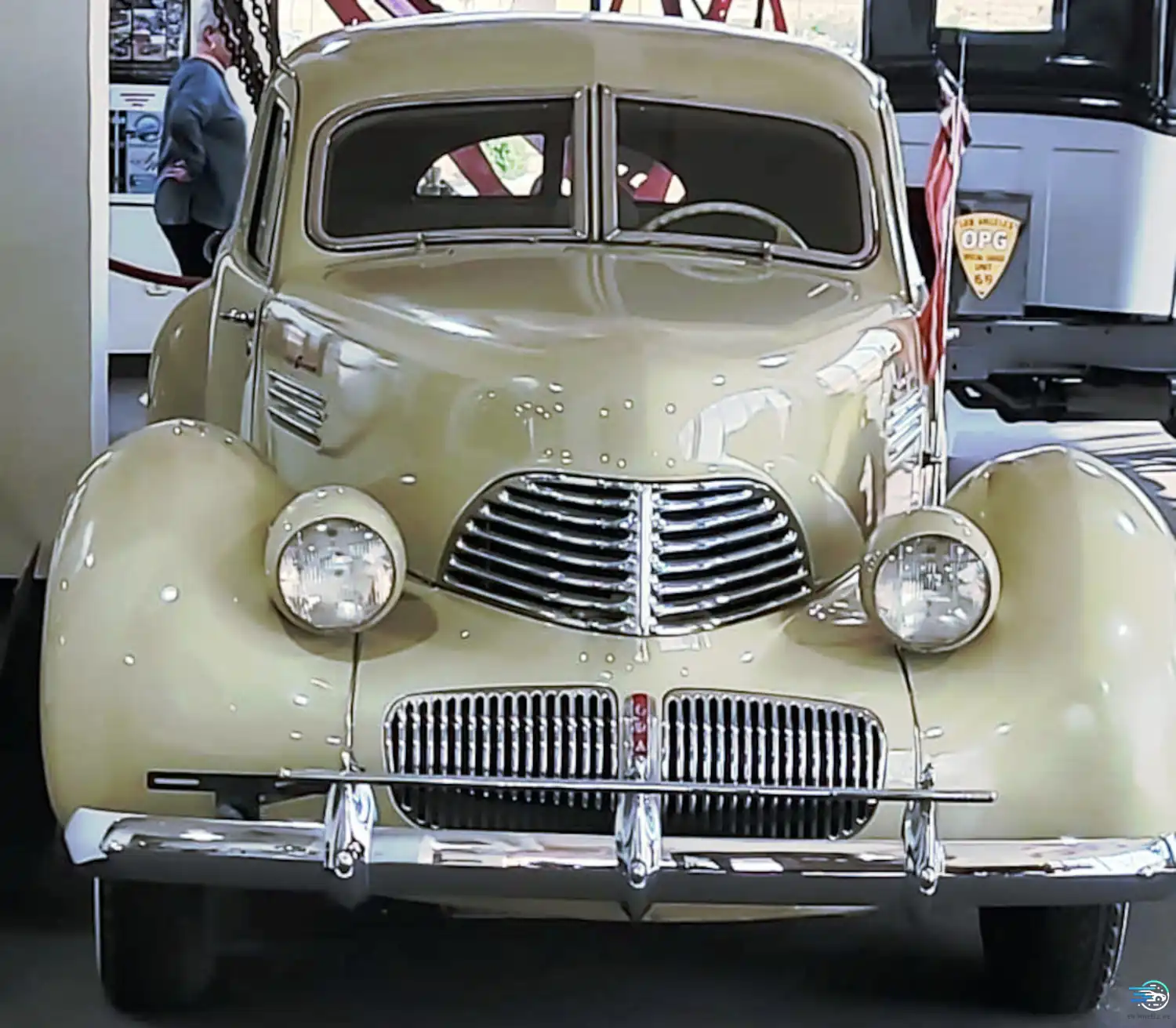
Graham-Paige, a company known for its innovative engineering and daring designs, produced the 1941 Hollywood, a car that would become a symbol of automotive artistry. Though its production was short-lived, the Hollywood’s unique aesthetic and advanced technology left an indelible mark on automotive history, making it a highly sought-after collectible today.
The 1941 Graham Hollywood, a car that dared to challenge the conventions of its time, stands as a testament to the audacious design and engineering that briefly illuminated the American automotive landscape. In a period marked by both the elegance of Art Deco and the looming shadow of World War II, the Hollywood emerged as a bold statement of streamlined beauty and advanced technology, a car that dared to be different.

A Design Ahead of Its Time: The Shark Nose Revolution: Raymond Loewy, a legendary industrial designer, lent his visionary touch to the Hollywood, drawing inspiration from the groundbreaking Cord 810/812. The result was a car that defied convention. Its most striking feature was the “shark nose” or “liquor nose” grille, a radical departure from traditional grilles of the era. This design, coupled with integrated headlights that flowed seamlessly into the fenders, created a sense of aerodynamic fluidity that was truly revolutionary. The Hollywood’s streamlined body, with its integrated fenders and sloping rear profile, further emphasized its futuristic aesthetic. It was a car that looked like it belonged on the cover of a science fiction magazine, a vision of tomorrow’s transportation.
Engineering Innovation: Supercharged Speed and Style: Beyond its striking design, the 1941 Graham Hollywood boasted engineering innovations. Under the hood resided a powerful 6-cylinder engine, often supercharged, capable of propelling the car to speeds exceeding 100 mph. This performance was remarkable for its time, highlighting Graham’s commitment to pushing the boundaries of automotive engineering. The car’s advanced chassis and suspension contributed to a smooth and comfortable ride, while its powerful brakes ensured confident stopping power. The Hollywood was not just a design exercise; it was a well-engineered automobile that delivered a truly exceptional driving experience.

A Short-Lived Dream: The Price of Innovation: Despite its groundbreaking design and engineering, the 1941 Graham Hollywood was a commercial failure. Its high price tag, combined with the economic uncertainty of the time, limited its appeal. Production numbers were low, making the Hollywood a rare and highly collectible car today. The Hollywood’s demise was also hastened by Graham-Paige’s financial struggles and the onset of World War II, which forced the company to shift its focus to wartime production.
A Lasting Legacy: An Icon of Automotive Art: Though its production run was brief, the 1941 Graham Hollywood left an indelible mark on automotive history. Its bold design and engineering innovations influenced subsequent generations of automobiles, and its status as a rare and desirable collectible has only grown over time. Today, the Hollywood is celebrated as a design icon, a symbol of the creative spirit and engineering prowess that defined the golden age of American automobiles. It stands as a reminder of a time when cars were not just modes of transportation, but works of art, expressions of individuality and innovation.
Summary:
- 1941 Graham Hollywood.
- Unique “shark nose” grille and integrated headlights.
- Streamlined, aerodynamic design.
- Supercharged 6-cylinder engine.
- Limited production, highly collectible.
- Design influenced by Raymond Loewy.
Disclaimer: Vehicle specifications and historical details are based on general automotive knowledge. Actual details may vary. Consult automotive history resources for precise information.
Photo courtesy of Don Laughlin’s Classic Car Museum, taken by George Wakim.
This article was crafted with assistance from Chatgpt
